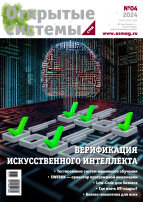COVER FEATURES
SECURE THE INTERNET OF THINGS
DDoS in the IoT: Mirai and Other Botnets
The Mirai botnet and its variants and imitators are a wake-up call to the industry to better secure Internet of Things devices or risk exposing the Internet infrastructure to increasingly disruptive distributed denial-of-service attacks.
Constantinos Kolias (kkolias@gmu.edu), Lead Engineer, First IoT Laboratory, NIST; Georgios Kambourakis (gkamb@aegean.gr), Assistant Professor, University of the Aegean; Angelos Stavrou (astavru@gmu.edu), professor, George Mason University; Jeffrey Voas (j.voas@ieee.org), Fellow, IEEE.
Challenges of Implementing Industrial IoT Applications
With virtually everybody now realizing that the Internet of Things is something promising and useful, few actually know how to make those promises a reality. There is no ‘magic box’ that, once inserted into a rolling mill, printing press or locomotive, will turn them into IoT nodes. However, any industrial system could be equipped with control systems that fit into the Internet of Things paradigm.
Mikhail Borisov (mmikbo@gmail.ru), Chief Technology Officer, Bogorodsky Print Shop (Moscow).
Can Blockchain Strengthen the Internet of Things?
Blockchain has been described in the popular press as the next big thing. Can it be used to secure the Internet of Things? Considering the rate of technology development, a promising future seems likely for the use of blockchain in addressing IoT security.
Nir Kshetri (nbkshetr@uncg.edu), Professor, University of North Carolina at Greensboro.
«Alexa, Can I Trust You?»
Several recent incidents highlight significant security and privacy risks associated with intelligent virtual assistants (IVAs). Better diagnostic testing of IVA ecosystems can reveal such vulnerabilities and lead to more trustworthy systems.
Hyunji Chung (hyunji.chung@nist.gov), Researcher, NIST Computer Security Division; Michaela Iorga (michaela.iorga@nist.gov), Senior Security Technical Lead, NIST; Jeffrey Voas (j.voas@ieee.org), Fellow, IEEE; Sangjin Lee (sangjin@korea.ac.kr), Professor, Korea University.
OSJ FORECAST
Welcome to Digital World: OS Presents 2018 «Big Seven» Forecasts
The next two to three years will be a watershed period for most companies as they embark on a path of radical changes, deploy platforms, and create ecosystems for building digital products, services and business processes to avoid significantly restraining their ability to compete. The Open Systems.DMBS Journal outlines seven major 2018 development trends in IT and digital business.
Natalya Dubova (osmag@osp.ru), Science Editor, Open Systems Journal.DBMS (Moscow).
PLATFORMS
On the way to «smart» storage system
Data storage systems are the core of all modern information system but thea failure of them is capable of causing irreparable damage to the company or organization. Technology Pure1 META based on machine learning methods is designed to ensure the smooth operation of flash arrays and prevent degradation of performance, but for a fully automated solution this is not enough.
Victor Lipin (lipinv@ot.ru), head of the department of computing platforms and storage systems, «Open Technologies» (Moscow).
SECURITY
Big Data Security Challenges
Big data systems security is getting less attention than it should. Still, when implementing big data projects, security issues should be considered from the very beginning to avoid getting extra risks instead of business opportunities down the road.
Dmitry Pudov (pudov@angaratech.ru), CTO, Angara Technologies Group (Moscow).
The Basics of a Reliable Cloud
To make cloud fault-tolerant, it must be geographically distributed and built using BGP (Border Gateway Protocol). Moreover, to create an efficient infrastructure, it first should be simulated.
Alexander Lyamin (la@qrator.net), CEO, Qrator Labs (Moscow).
IT MANAGEMENT
Scaling Agile Development
Today, few doubt efficiency of teams adopting the agile methodology. Although scaling agile development is rather difficult for companies with established structure and processes, it is necessary for all who hope to stay competitive in digital economy.
Alexey Ionov (alexey@ionovpartners.com), Managing Partner, Ionov & Partners; Dmitry Volkov (vlk@keldysh.ru), Fellow, Keldysh Institute of Applied Mathematics.
SOFTWARE ENGINEERING
Micro Services Architecture in Enterprise IT Landscape
Micro services architecture, initially used only for tasks specific to online businesses, now penetrates corporate IT both offering advantages and requiring large-scale changes in the development and operation of business applications, with such changes inevitably bringing in certain risks with them.
Maxim Smirnov (mxsmirnov@gmail.com; mxsmirnov.com), Chief Architect, Binbank Digital (Moscow).
EXPERIENCE
Environmental Monitoring Data Management
Efficient and convenient data handling is a must for the majority of systems, including the ones used for biomonitoring. A cloud platform used by the UN Commission for Air Pollution Control enables pinpointing problem areas and creating regional maps to better understand the nature of long-term cross-border contaminations.
Alexander Uzhinsky (auzhinskiy@jinr.ru), Lead Programmer; Gennady Ososkov (ososkov@jinr.ru), Senior Fellow; Marina Frontasieva (marina@nf.jinr.ru), Head of Neutron Activation Analysis and Applied Research Sector, Joint Institute for Nuclear Research (Dubna).
OS ACADEMY
Assessing Student Performance in Massive Open Online Courses
Checking students’ works in massive open online courses requires large amount of manual labor from teachers, while grading non-formalized works like essays or papers is a real stumbling block in automated learning systems. Enabling students themselves to cross-check the works of their peers makes the situation a great deal better.
Alexander Serikov (aserikov@hse.ru), Senior Provost, National Open University INTUIT (Moscow).
LIBRARY
Blockchain in Finance, Human Skin as UI, and Programming the World
The September, October, and November issues of the Computer Magazine (IEEE Computer Society, Vol. 50, No. 9, 10, 11 2017) cover the topics of using blockchain in financial services industry, turning skin into a human-computer interface, and implementing accessible-to-everyone methods of programming Internet of Things objects.
Alexander Tyrenko (shoorah@osp.ru), reviewer, Computerworld Russia (Moscow).

